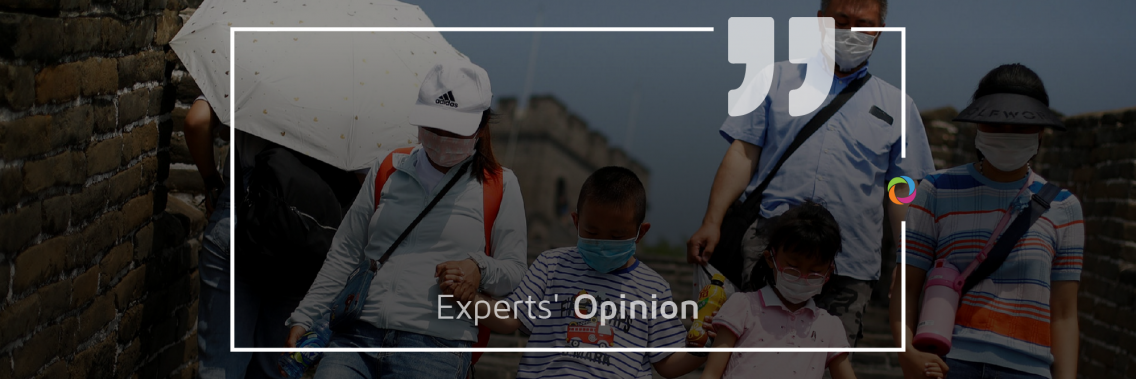The Coronavirus pandemic has severely affected the tourism sector, particularly in developing countries which rely on this industry. According to the World Tourism Organization (UNWTO), international tourist arrivals will be down by between 20% and 30% in 2020 compared to 2019 figures. This is, equivalent to a loss of between US$300 and 450 billion in international tourism receipts (exports) – almost one third of the US$1.5 trillion generated globally. We talked to several international experts in tourism to see what they think.
How will the lack of tourism affect developing countries?

“Depending on the size of the tourism sector within the economy, the lack of tourism in developing countries could impact macroeconomic stability and lead to political instability. Decreasing tourism demand could result in the closure of small and medium sized enterprises (SMSEs) operating in the sector, notably those that are least competitive, and a drop in production in other economic activities (agriculture, agri-food businesses, transportation, etc.) leading to the contraction of or negative economic growth. In such a situation, developing countries will register job losses jobs not only in the tourism sector but also in the other activities putting the pressure on governments especially those with limited fiscal space. In supporting the tourism sector and economic growth, governments may see their fiscal position deteriorating without reaching the expected outcomes due to the weak public financial management systems that are characteristic of most developing countries.”

“Developing countries will experience direct economic impact in the transportation, tourism, hospitality and services sectors as well as the informal economy that is reliant on foreign visitors. All around the world, small fishing villages that transformed into coastal tourist towns are turning out the lights. The reality is that, in three months without tourism in developing countries, many people have already exhausted their savings, missed paying an energy bill and do not know when the next opportunity for work will come. Scores of families in developing countries are not earning money to buy basic daily items right now due to the lack of tourism.”

“Countries are being affected differently depending on the relative importance of tourism to their economy and their overall ability to recover following the crisis. For example, for 22 developing countries tourism accounts for more than 10% of their GDP leaving them highly exposed to the impact – most of these are small islands. The impact on employment is similar – for 17 developing countries, tourism represents 10% of employment, hence unemployment will be high. Small and medium sized businesses will be impacted relatively more than larger businesses as they do not have the capacity, cash flows, diversity of markets or supply chains nor the resources to mitigate impacts.”

“Even though it seems that the lack of tourism will generate only negative impacts on developing countries, the benefits of the pandemic are also an opportunity to rethink and reshape the way tourism operates in each territory. Before, the concept of tourism in developing countries has put at risk the resources that constitute the actual strengths of the destination such as clean water, fresh air and permanently available, ready to serve fresh crops of fruit and vegetables. From that point of view, this shutdown constitutes a chance for developing countries to improve regulations and orientate their tourist industry towards the new desires and expectations from the world’s population, ensuring the protection of sustainability and success of the region.”
What should developing countries do to restart tourism?

“The first step for developing countries to restart tourism is to focus on their national market. Their rise of the middle class, the millennials becoming financially independent and new tourist behaviors post COVID-19 represent a tremendous opportunity for developing countries. This will contribute to the creation of an enabling environment for foreign and domestic investment. The second step is to focus on tourism in regional/cross border countries. Tourists will favor travelling to closer destinations post COVID-19 and regional cooperation between countries will make the restarting of tourism easier to implement. The third step is to prepare a tourism strategy to welcome back international tourists and consider new behaviors. Some of the tourism trends before Covid 19 will be amplified after Covid 19, such as the quest for nature, authenticity and experience. Group travel activities and over-tourism destinations will be less favored. Tourists will also look for a safer and healthier destination. To sum up, one of the main challenges for developing countries will be to reassure tourists to travel and enjoy holidays again thanks to safety protocol and standardization without compromising authenticity and the guest experience.”

“What can be done within safe limits and careful measures? Focus on what can be done such as, like for example, Internal Travel, facilitate road users, travel within the Area, the Region, the neighboring state or county. Create safe conditions to travel between towns and counties and then focus on developing awareness in the communities that will benefit from the resumption of the tourism activity.”

“One of the first steps is that developing countries should probably now start training programs for hotels and services on how to manage the situation and be clear about their restrictions. Another beneficial step could be to investigate developed countries’ policies and learn what the governments are doing there and, most importantly, find out what their tourists expect and how their behavior may have changed. It would be great if these two parts of the world communicate with each other and decide to share responsibilities and assure tourists that, if a tourist contracts the virus during their vacation, evacuation back home would be arranged.”

“Guarantees that tourists can expect include that the food is safe in each of the places that bear the seal, BPA, BPM. Throughout the tourist route, it should be ensured that child employment and inadequate wages and hours are prevented, the environment is protected, there is no discrimination and that specific groups (women, the disabled, etc.) and minorities are promoted. It should be guaranteed that in places that produce or serve food, the local community is assisted and supported with any food that is not used. Furthermore, the availability of certain typical foods should be guaranteed and that history and values of the communities should be made known. Food and crafts should be supplied by local suppliers. A minimum certain criteria of products and services should be guaranteed. Constructions should include the principles of sustainable architecture. Calculations should be made as to the equivalent emissions of carbon dioxide (CO2) and compensation (in addition to its reduction). The consumption of network water in the different processes throughout the tourist route should be calculated and its use reduced and optimized.”
What should the international community do to help them?

“The international community, including the international organizations, multilateral, unilateral and bilateral donor partners, need to modify their priorities for donor support. The focus must be sectoral aid, with tourism and tourism related sectors being a key focus. Aid must be targeted on productive sector development in Tourism and Tourism related services as well as the health sector for the next three to five years. Donors also need to support better health systems across developing countries to deal with pandemics and outbreaks. For example, post pandemic, consumers will exercise caution by travelling to destinations that have medical facilities equipped to handle health concerns. For tourism, the health services of developing countries will need to be strengthened to ensure consumer confidence for the tourism sector.”

“Free affiliation with the United Nations World Tourism Organization (UNWTO) needs to be given to developing countries to enable them to benefit from personalized assistance and guidance, as all developing countries do face the same challenges. The UNWTO, in collaborations with the World Travel & Tourism Council (WTTC), WHO and World Bank and the International Civil Aviation Organization (ICAO), is already assisting world destinations to restart tourism. Developing countries such as Jamaica, Maldives, Seychelles, Kenya and Cameroon are examples of destinations which have successfully adopted those guidelines. Moreover, the fostering of alliances with regional tourism associations can also empower destinations to collectively adopt a realistic marketing approach. Collaborations need to be initiated with regional tourism associations and leading international organizations such as the International Air Transport Association (IATA), the African Union, the European Union and the Pacific-Asia Travel Association (PATA) among others. This will help to develop new standard and specific guidelines in order to reposition declining destinations on the tourism map.”

“While tourism professionals in developed countries used digital tools to work remotely and to promote destinations through virtual visits during the social distancing process, their counterparts in developing countries struggled to stay connected due to the lack of digital facilities. Thus, the international community can support them with technology to reshape the way in which they work and to stop the spread of the virus. Moreover, the international community can promote share tourism projects such as volunteering tours, agricultural exchange programs, internships in developing countries until the pleasure tourism re-establishes in these destinations. International organizations and NGOs should help developing countries to appeal to the international community to lift travel restrictions.”
Check out some open positions in the tourism sector here.

